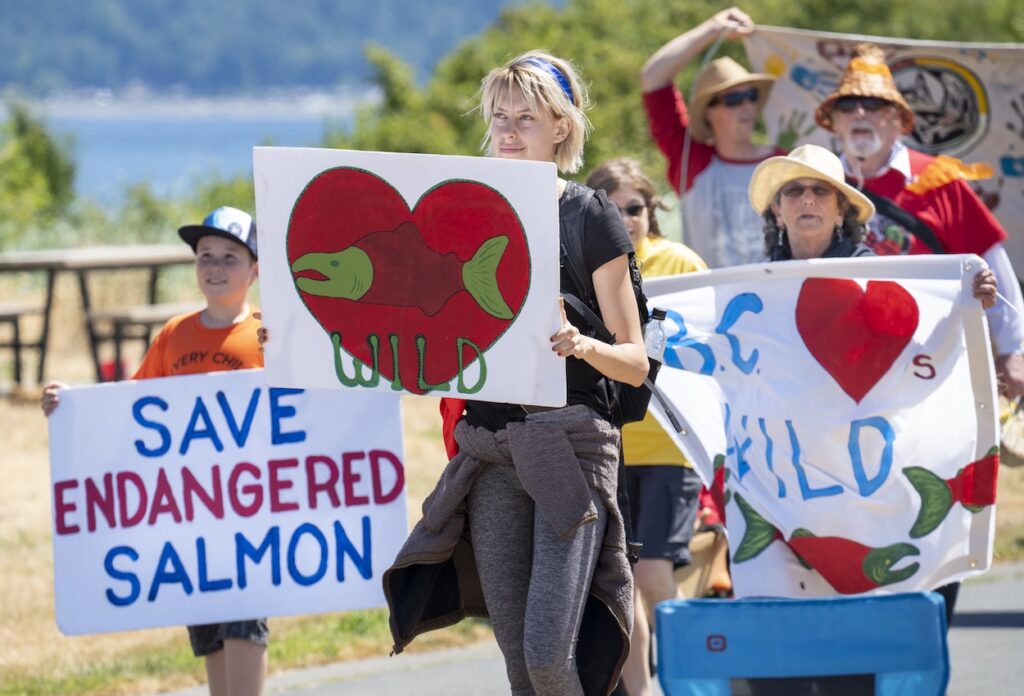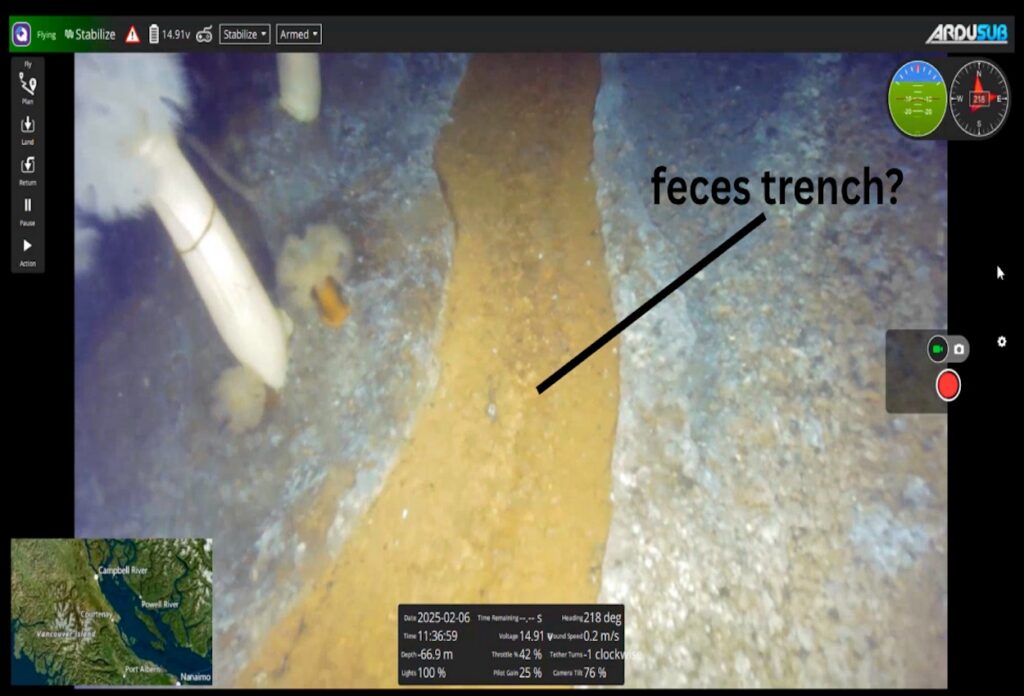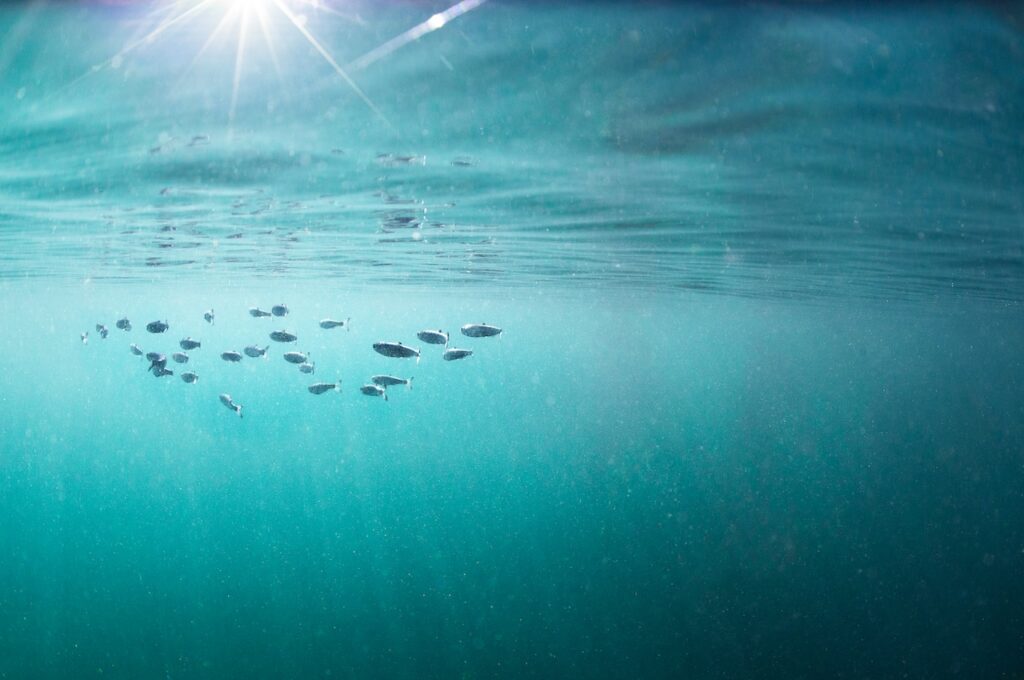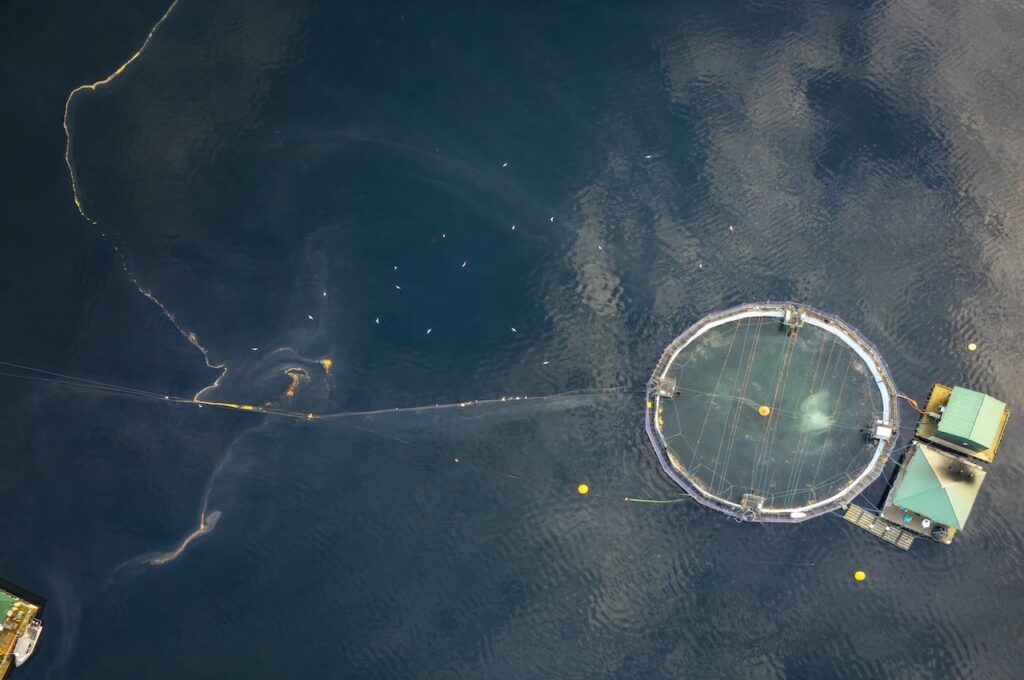In 2011, the Cohen Commission convened special hearings on disease in salmon farms, forcing fish farm companies and the provincial and federal governments to make their disease data public. When Dr. Kristi Miller took the stand, she revealed that Tofino-based Creative Salmon had for seven years been dealing with an undiagnosed jaundice problem in their fish. They had asked her to investigate. Her study revealed that Creative’s Chinook salmon had piscine orthoreovirus (PRV).
Fast forward seven years, with farmed salmon viruses making headlines on a regular basis. A 2018 study from the Strategic Salmon Health Initiative (SSHI) sheds new light on PRV. The study looked at samples from farmed Chinook and Atlantic salmon. Piscine orthoreovirus (PRV) is a Norwegian virus. In Atlantic salmon it is known to cause Heart and Skeletal Muscular Inflammation. Turns out PRV behaves differently in Chinook salmon. When PRV gets in the red blood cells of Chinook, it causes them to burst. The toxic levels of hemoglobin then overwhelm the liver and kidneys, resulting in an anemic appearance.
Dead fish swimming
The study found a high prevalence of PRV among farmed fish, with 65 to 75 per cent of both Atlantic and Chinook salmon carrying the virus and a quarter of them having a “high viral PRV load.” Fish living in pens have the luxury of being fed (and protected from predators) while they are sick. It’s hard to find PRV-infected fish in the wild, because they don’t survive. Given the high prevalence of PRV on BC salmon farms, study co-author Dr. Kristi Miller is very concerned about the potential for viruses spreading to wild fish, stating “They are dead fish swimming as soon as they are physically compromised”.
The study is even more alarming because Chinook populations are collapsing on the west coast of Vancouver Island. Chinook are the preferred food of endangered southern resident orcas.
Contaminated bloodwater still flowing into Tofino Harbour
Remember Tavish Campbell’s shocking 2017 footage of bloodwater billowing out underneath fish plants? Some of that footage was taken at Creative Salmon’s processing plant in Tofino. Their bloodwater was tested and found to have PRV.
The pipe at Creative’s plant continues to spew disease-tainted bloodwater into Tofino Harbour. The Ministry of Environment promised a study, but has done nothing to turn off the tap.
Only removing salmon farms from wild salmon migratory routes will put an end to the spread of viruses from farmed to wild salmon. But will it happen in time to save one of the most precious resources on the planet?
Dan Lewis is Executive Director of Clayoquot Action.






